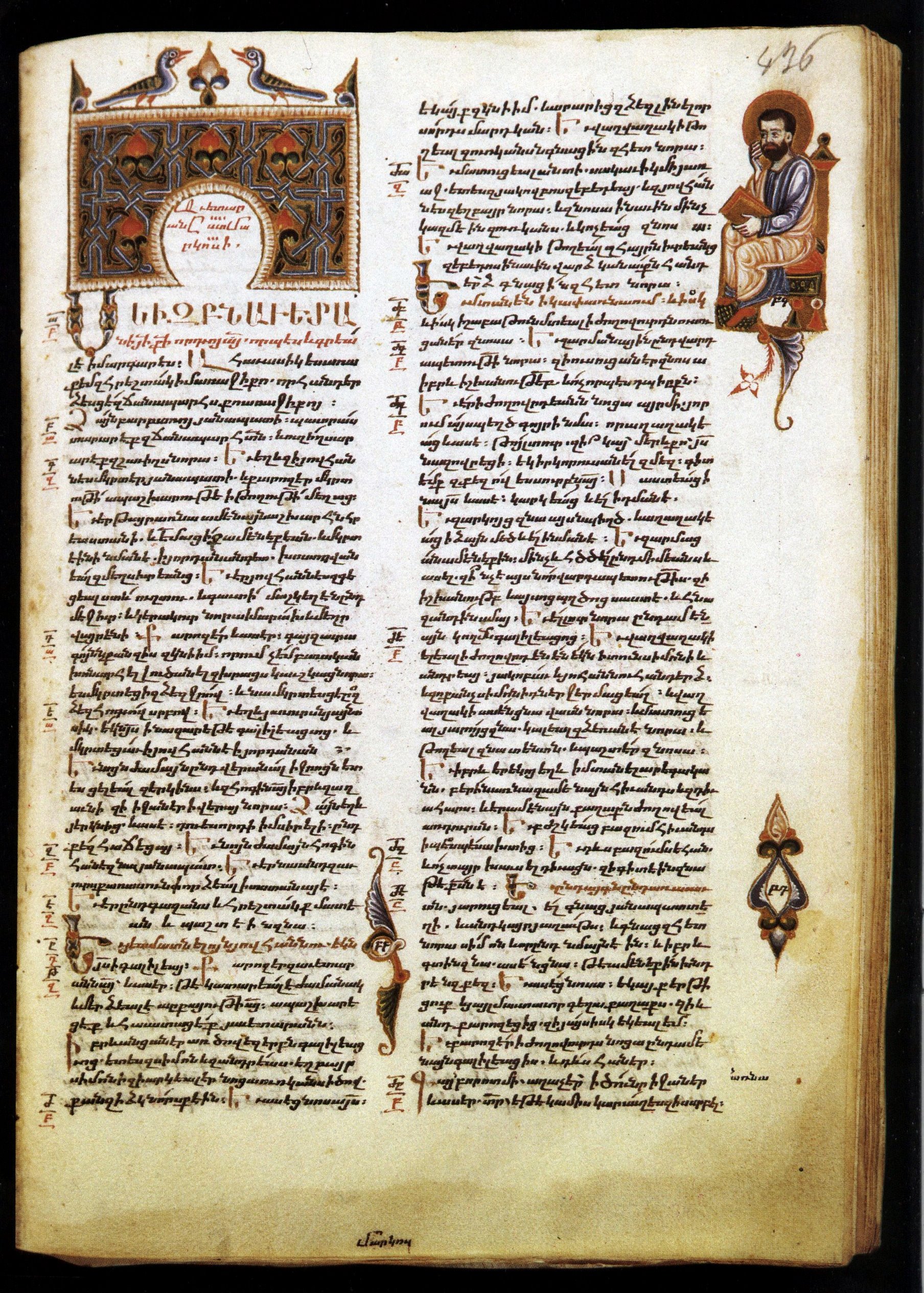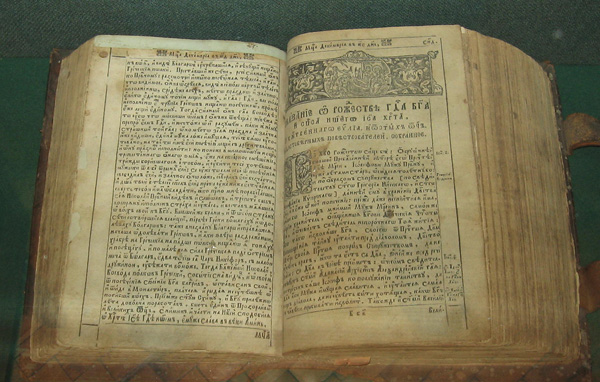|
Minuscule 657
Minuscule 657 (in the Gregory-Aland numbering), ε 180 ( von Soden), is a Greek minuscule manuscript of the New Testament, on parchment. Palaeographically it has been assigned to the 11th or 12th century. The manuscript is lacunose.K. Aland, M. Welte, B. Köster, K. Junack, "Kurzgefasste Liste der griechischen Handschriften des Neues Testaments", ''Walter de Gruyter'', Berlin, New York 1994, p. 86.Handschriftenliste at the Münster Institute Scrivener labelled it by 876e. Description The codex contains the text of the |
Gospel
Gospel originally meant the Christian message (" the gospel"), but in the 2nd century it came to be used also for the books in which the message was set out. In this sense a gospel can be defined as a loose-knit, episodic narrative of the words and deeds of Jesus, culminating in his trial and death and concluding with various reports of his post-resurrection appearances. Modern scholars are cautious of relying on the gospels uncritically, but nevertheless, they provide a good idea of the public career of Jesus, and critical study can attempt to distinguish the original ideas of Jesus from those of the later authors. The four canonical gospels were probably written between AD 66 and 110. All four were anonymous (with the modern names added in the 2nd century), almost certainly none were by eyewitnesses, and all are the end-products of long oral and written transmission. Mark was the first to be written, using a variety of sources. The authors of Matthew and Luke both indepe ... [...More Info...] [...Related Items...] OR: [Wikipedia] [Google] [Baidu] |
Institute For New Testament Textual Research
The Institute for New Testament Textual Research (german: Institut für neutestamentliche Textforschung — INTF) at the University of Münster, Westphalia, Germany, is to research the textual history of the New Testament and to reconstruct its Greek initial text on the basis of the entire manuscript tradition, the early translations and patristic citations; furthermore the preparation of an '' Editio Critica Maior'' based on the entire tradition of the New Testament in Greek manuscripts, early versions and New Testament quotations in ancient Christian literature. Under Kurt Aland's supervision, the INTF collected almost the entire material that was needed. The manuscript count in 1950 was 4250, in 1983, 5460, and in 2017 approximately 5800 manuscripts. Moreover, INTF produces several more editions and a variety of tools for New Testament scholarship, including the concise editions known as the "Nestle–Aland" – ''Novum Testamentum Graece'' and the UBS Greek New Testament. ... [...More Info...] [...Related Items...] OR: [Wikipedia] [Google] [Baidu] |
Family Π
Family Π is a group of New Testament manuscripts. Belonging to the Byzantine text-type, it is one of the textual families of this group. The name of the family, "Π" (pronounced in English as "pie"), is drawn from the symbol used for the Codex Petropolitanus. One of the most distinct of the Byzantine sub-groups, it is very old and the third largest. The oldest Byzantine manuscripts belong to this family. Hermann von Soden designated this group by the symbol "Ka". According to him, its text is not purely Byzantine. Codices and manuscripts Soden included the following in this group of codices: Cyprius (K), Petropolitanus (Π), 72, 114, 116, 178, 265, 389, 1008, 1009, 1079, 1154, 1200, 1219, 1346, and 1398. Lake added to this group of manuscripts: 489, 537, 652, 775, 796, 904, 1478, 1500, 1546, 1561, 1781, 1816. Soden also associated Codex Alexandrinus with this group. Wisse lists about 150 witnesses of the family, but the majority of them belong to this family only in so ... [...More Info...] [...Related Items...] OR: [Wikipedia] [Google] [Baidu] |
Wisse's Profile Method
The Claremont Profile Method is a method for classifying ancient manuscripts of the Bible. It was elaborated by Ernest Cadman Colwell and his students. Professor Frederik Wisse attempted to establish an accurate and rapid procedure for the classification of the manuscript evidence of any ancient text with large manuscript attestation, and to present an adequate basis for the selection of balanced representatives of the whole tradition. The work of Wisse is limited only to three chapters in Luke: 1, 10, and 20. Wisse's profiles The word before the bracket is the reading of the UBS edition. The profile of a manuscript is formed by noting the numbers of those test readings where the manuscript agrees with the bold reading. The readings which are not bold are those of the Textus Receptus. Luke 1 * Luke 1:2 (1 reading) — ] * Luke 1:7 (2 reading) — ην η ελισαβετ ] η ελισαβετ ην * Luke 1:7 (3 reading) — η ] omit * Luke 1:8 (4 reading) — ] εναντ ... [...More Info...] [...Related Items...] OR: [Wikipedia] [Google] [Baidu] |
William B
William is a masculine given name of Norman French origin.Hanks, Hardcastle and Hodges, ''Oxford Dictionary of First Names'', Oxford University Press, 2nd edition, , p. 276. It became very popular in the English language after the Norman conquest of England in 1066,All Things William"Meaning & Origin of the Name"/ref> and remained so throughout the Middle Ages and into the modern era. It is sometimes abbreviated "Wm." Shortened familiar versions in English include Will, Wills, Willy, Willie, Liam, Bill, and Billy. A common Irish form is Liam. Scottish diminutives include Wull, Willie or Wullie (as in Oor Wullie or the play ''Douglas''). Female forms are Willa, Willemina, Wilma and Wilhelmina. Etymology William is related to the German given name ''Wilhelm''. Both ultimately descend from Proto-Germanic ''*Wiljahelmaz'', with a direct cognate also in the Old Norse name ''Vilhjalmr'' and a West Germanic borrowing into Medieval Latin ''Willelmus''. The Proto-Germa ... [...More Info...] [...Related Items...] OR: [Wikipedia] [Google] [Baidu] |
Categories Of New Testament Manuscripts
New Testament manuscripts in Greek are categorized into five groups, according to a scheme introduced in 1981 by Kurt Kurt is a male given name of Germanic or Turkish origin. ''Kurt'' or ''Curt'' originated as short forms of the Germanic Conrad, depending on geographical usage, with meanings including counselor or advisor. In Turkish, Kurt means "Wolf" and is ... and Barbara Aland in ''The Text of the New Testament''. The categories are based on how each manuscript relates to the various text-types. Generally speaking, earlier Alexandrian manuscripts are category I, while later Byzantine manuscripts are category V. Aland's method involved considering 1000 passages where the Byzantine text differs from non-Byzantine text. The Alands did not select their 1000 readings from all of the NT books; for example, none were drawn from Matthew and Luke. Description of categories The Alands' categories do not simply correspond to the text-types; all they do is demonstrate the 'B ... [...More Info...] [...Related Items...] OR: [Wikipedia] [Google] [Baidu] |
Kurt Aland
Kurt Aland (28 March 1915 – 13 April 1994) was a German theologian and biblical scholar who specialized in New Testament textual criticism. He founded the ''Institut für neutestamentliche Textforschung'' (Institute for New Testament Textual Research) in Münster and served as its first director from 1959 to 1983. He was one of the principal editors of '' Nestle–Aland – Novum Testamentum Graece'' for the Deutsche Bibelgesellschaft and '' The Greek New Testament'' for the United Bible Societies. Life Aland was born in Berlin- Steglitz. He started studying theology in 1933 at the Friedrich-Wilhelms-Universität in Berlin (he also studied philology, archaeology, and history). On 23 March that year, he was examined before the ''Bruderrat'' (council of brothers) in the '' Bekennende Kirche'' (Confessing Church). During his studies, he worked for the journal of the Confessing Church, ''Junge Kirche'' (Young Church). In an ideological brochure, ''Wer fälscht?'' (Who is lyi ... [...More Info...] [...Related Items...] OR: [Wikipedia] [Google] [Baidu] |
Family Kx
Family Kx is a large group of the New Testament manuscripts. It belongs to the Byzantine text-type as one of the textual families of this group. It includes uncials, and although hundreds of minuscules, no early ones. Description The group was discovered by Hermann von Soden and designated by him with symbol Kx. The only distinction von Soden made among Kx members was according to the presence and type of the Pericope adulterae. Due to the massive influence of the group on other groups and its lack of control, the boundaries of group remain blurred. The most problematic is the question, how many Kx readings can be missing and how many surplus readings can be added before a manuscript no longer deserves to be classified as Kx? According to the Claremont Profile Method Kx has following profile in Luke 1, 10, and 20 are:The word before the bracket is the reading of the UBS edition; the readings which are not bold are those of the TR. See F. Wisse, ''The Profile Method for the C ... [...More Info...] [...Related Items...] OR: [Wikipedia] [Google] [Baidu] |
Hermann Von Soden
Baron Hermann von Soden (16 August 1852 – 15 January 1914) was a German Biblical scholar, minister, professor of divinity, and textual theorist. Life Born in Cincinnati, Ohio, on August 16, 1852, Soden was educated at the University of Tübingen. In 1881 he was appointed as the minister at Dresden- Striesen and in 1887 he became minister of the Jerusalem Church in Berlin. In 1889 he also became a ''privatdozent'', a form of tutor, in the University of Berlin, and four years later was appointed as an extraordinary professor of divinity. He fought for a more presbyterian and democratic constitution in the congregations of the Evangelical State Church of Prussia's older Provinces. His grave is preserved in the Protestant ''Friedhof II der Jerusalems- und Neuen Kirchengemeinde'' (Cemetery No. II of the congregations of the Jerusalem's Church and the New Church) in Berlin-Kreuzberg, south of the Hallesches Tor. Soden introduced a new notation of manuscripts and also developed a n ... [...More Info...] [...Related Items...] OR: [Wikipedia] [Google] [Baidu] |
Menologion
Menologium (), also written menology, and menologe, is a service-book used in the Eastern Orthodox Church and those Eastern Catholic Churches which follow the Byzantine Rite. From its derivation from Greek , ''menológion'', from μήν ''mén'' "a month", via Latin '' menologium'', the literal meaning is "month-set"—in other words, a book arranged according to the months. Like a good many other liturgical terms (e.g., lectionary), the word has been used in several quite distinct senses. Definitions ''Menologion'' has several different meanings: * "Menologion" is not infrequently used as synonymous with "Menaion" (pl. ''Menaia''). The Menaia, usually in twelve volumes—one for each month—but sometimes bound in three, form an office-book, which in the Orthodox Church, corresponds roughly to the ''Proprium Sanctorum'' of the Latin Breviary. They include all the propers (variable parts) of the services connected with the commemoration of saints and in particular the can ... [...More Info...] [...Related Items...] OR: [Wikipedia] [Google] [Baidu] |
Synaxarion
Synaxarion or Synexarion (plurals Synaxaria, Synexaria; el, Συναξάριον, from συνάγειν, ''synagein'', "to bring together"; cf. etymology of '' synaxis'' and '' synagogue''; Latin: ''Synaxarium'', ''Synexarium''; cop, ⲥⲩⲛⲁⲝⲁⲣⲓⲟⲛ; ar, ٱلسِّنْكِسَارُ/ٱلسَّنْكِسَارُ/ٱلسِّنَكْسَارُ, translit=As-sinkisār/As-sankisār/As-sinaksār) is the name given in the Eastern Orthodox, Oriental Orthodox and Eastern Catholic Churches to a compilation of hagiographies corresponding roughly to the martyrology of the Roman Church. There are two kinds of synaxaria: *Simple synaxaria: lists of the saints arranged in the order of their anniversaries, e.g. the calendar of Morcelli *Historical synaxaria: including biographical notices, e.g. the Menologion of Basil II and the synaxarium of Sirmond. The notices given in the historical synaxaria are summaries of those in the great menologies, or collections of lives of sai ... [...More Info...] [...Related Items...] OR: [Wikipedia] [Google] [Baidu] |




